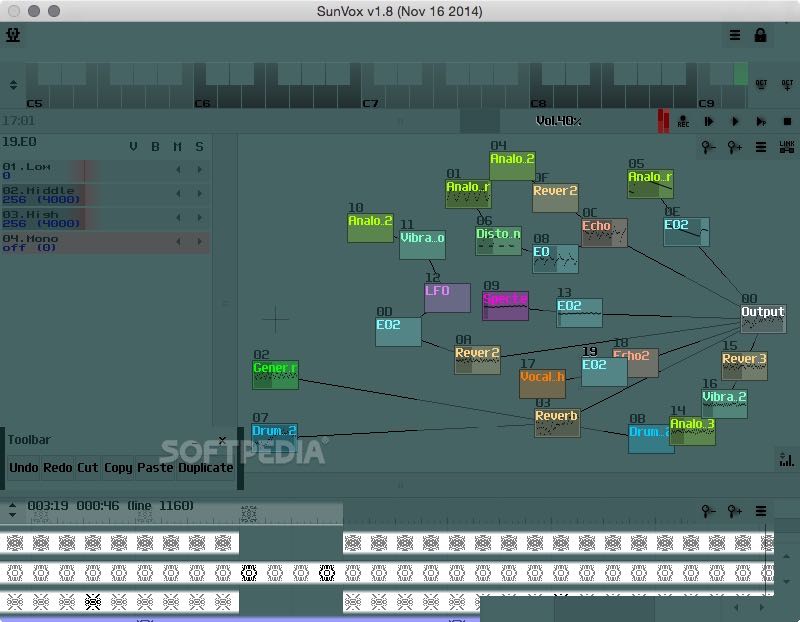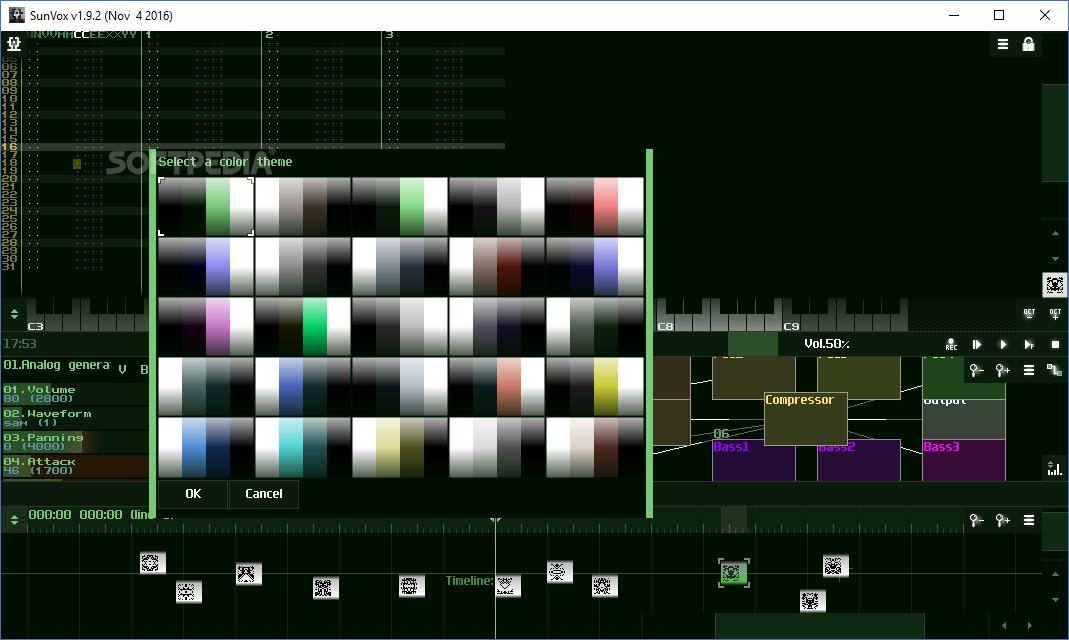

Fix: Interpolation issue / hard volume cut when not using an envelope for volume with the KIL command Fix: Typo in FX command name for Trig env decay (Now: "DE". Fix: Sample Editor could save corrupt file if waveform was still being drawn while saving Fix: External Instrument Program change message did not properly send bank Fix: External Synth default volume was a bit quiet due to VOL FX command Fix: Trig envelope could be set to the wrong position when switching between instruments on the same track Fix: External Synth - CC FX commands could cause "green dot" position indicator to be drawn wrong Improved: External Synth - better envelope handling to prevent pops/clicks New: Sample editor now displays help text for selection length
#Sunvox changelog update
M8 just got an update with new synth engine and improved external instrument integration via audio/midi: Dirtywave/M8Firmware/blob/main/changelog.txt - Version 3.0.2

Implications for UI design are discussed in the context of existing music systems, and supporting digitally-mediated creativity in other domains based on notation use. Empirical findings broadly support the proposed design heuristics, and enable the development of further models of liveness and flow in notation use.
#Sunvox changelog professional
Quantitative analyses of interaction data are supplemented with a detailed video study of a professional tracker composer, and a user survey that draws on psychometric methods to evaluate flow experiences in the use of digital music notations, such as sequencers and trackers. The interaction and development of more than 1,000 sequencer and tracker users was recorded over a period of 2 years, to investigate the nature and development of skill and technique, look for evidence of flow experiences, and establish the use and role of both visual and musical feedback in music software. Extensive analytical methods are used to look at corollaries of virtuosity and flow in real-world computer music interaction, notably in soundtracking, a software-based composing environment offering a rapid edit-audition feedback cycle, enabled by the user’s skill in manipulating the text-based notation (and program) through the computer keyboard. Using the cognitive dimensions of notations framework (Green, 1996), models of the creative user experience are developed, working towards a theoretical framework for HCI in music systems, and specifically computer-aided composition. Integrating psychologies of expertise and intrinsic motivation, this thesis proposes a design shift from usability to virtuosity, using theories of “flow” (Csikszentmihalyi, 1996) and feedback “liveness” (Tanimoto, 1990) to identify factors that facilitate learning and creativity in digital notations and interfaces, leading to a set of design heuristics to support virtuosity in notation use. The creative process is not only fragmented across multiple physical (and virtual) devices, but divided across creativity and productivity phases separated by the act of recording. In performance-based music systems such as sequencers, a disjunction exists between the musician’s specialist skill with performance hardware and the generic usability techniques applied in the design of the software. Discussions and observations are supported by initial findings from a large-scale, 2-year user study of over 1,000 tracker and sequencer users.Īnd plenty more in Chris Nash’s 2011 PhD thesis from Cambridge titled Supporting Virtuosity and Flow in Computer Music.Īs we begin to realise the sonic and expressive potential of the computer, HCI researchers face the challenge of designing rewarding and accessible user experiences that enable individuals to explore complex creative domains such as music. Comparisons are made to mainstream music interaction paradigms, such as performance capture and sequencing, where support for virtuosity is present in MIDI devices and episodes of live performance recording, but otherwise impeded by mouse-driven interfaces designed around visual metaphors for novice use, rather than the development of practised skill.

The role of virtuosity in both the personal user experience and the wider demoscene hacker-artist subculture are discussed. This paper explores the concepts of virtuosity and flow in computer music, by looking at the technological, interactive and social factors in soundtracking a text-based, computer keyboard-manipulated notation for real-time computer-aided music composition. Tracking Virtuosity and Flow in Computer Music (sorry dubious ResearchGate link while Nash’s website link is broken), Proceedings of Internatioanal Computer Music Conference 2011.


 0 kommentar(er)
0 kommentar(er)
